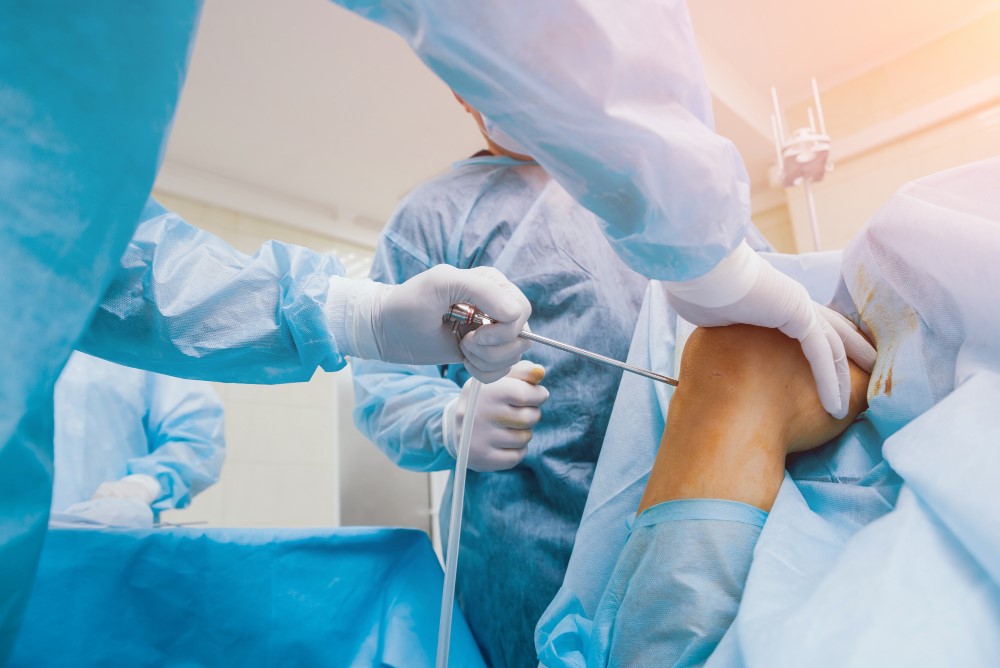When it comes to knee health, understanding different medical procedures can be helpful. One such procedure is the LCL surgery. It’s pivotal to comprehend why such surgeries are necessary, what they entail, and how they impact life post-surgery. This article delves into the core aspects of LCL surgery procedure, highlighting its benefits, associated risks, and the road to recovery.
Understanding the LCL Surgery: The Why and How
The knee is a complex joint that plays a vital role in our daily movements. Within the knee, the Lateral Collateral Ligament (LCL) provides essential stability. It runs along the outer side of the knee and helps keep it stable during movement, especially side-to-side motions.
However, injuries to the LCL can occur from sports, accidents, or falls. These injuries can compromise everyday mobility and stability. At times, such injuries necessitate surgical intervention. LCL surgery often becomes essential when there’s a tear that doesn’t heal properly with rest or when ligaments fail to provide adequate stability.
LCL surgery encompasses different options depending on the severity. LCL tear surgery options mainly include arthroscopic and open surgeries. Arthroscopic surgery involves tiny incisions and is less invasive. Conversely, open surgery is more extensive but might be required in complex cases. Preparations before surgery, or LCL surgery preparation, might involve imaging tests, physical evaluations, and sometimes, certain lifestyle adjustments like quitting smoking or modifying exercise routines to ensure you’re fit for the procedure.
The Benefits & Recovery Journey of LCL Surgery
Post-LCL surgery, many individuals experience significant improvements in knee function. This boost in knee mobility translates into a better quality of life, allowing individuals to return to activities they love, be it sports, hobbies, or just comfortable daily movements. With successful surgery, patients often report increased stability and a lot less pain.
Statistics show an encouraging LCL surgery success rate. Most people experience a full recovery with minimal complications, offering them relief and the capacity to return to everyday activities without discomfort. There are several inspiring stories of people who underwent LCL surgery and saw dramatic improvements. Each story emphasizes the surgery’s role in regaining not just mobility but confidence.
The LCL surgery recovery time varies. Immediately after surgery, rest and icing of the knee are crucial. Pain management and elevation also play a part in initial healing. As weeks pass, physical therapy becomes essential. A well-formulated physical therapy routine can accelerate healing, reduce stiffness, and bolster knee strength. Patience is key—it takes time and effort to regain full mobility.
To aid recovery, consider these steps: – Follow Doctor’s Advice: Adhere to medical guidance rigorously to prevent setbacks. – Commit to Physical Therapy: Consistent therapy helps speed recovery and ensures strength. – Monitor Progress: Keep track of your improvements and consult your doctor regularly.
LCL surgery aftercare is as important as the surgery itself. Proper aftercare involves adhering to physical therapy schedules, attending follow-up doctor’s appointments, and observing any lifestyle changes suggested.
Advancements and Realities: Innovations & Risks in LCL Surgery
The medical field continually evolves, and so do surgical techniques. Recent advancements in LCL surgery focus on precision and minimally invasive methods, which translate into faster recoveries and minimal scars. Arthroscopic techniques, for instance, revolutionize the procedure by minimizing tissue damage and promoting speedy recovery.
While surgeries generally aim to help, understanding LCL surgery complications is necessary. Risks like infections, stiffness, or incomplete healing might arise, though they’re more common if post-op care or preparatory steps aren’t followed. Prevention strategies against complications include selecting a reputable surgeon, adhering to pre- and post-op advice, and ensuring a clean recovery environment.
There are several myths surrounding LCL surgery. Some say it might lead to arthritis or result in more complex knee issues later. However, these are misconceptions. In reality, a properly done surgery often prevents further knee damage and reduces permanent discomfort.
Ensuring an informed decision involves: – Research: Get to know the procedure thoroughly. – Consultation: Engage in open, detailed discussions with medical professionals. – Second Opinions: Consider consulting another professional for peace of mind.
Conclusion: Informed Decisions and Healthier Knees
LCL surgery procedure can offer significant benefits for individuals suffering from ligament injuries. It plays an integral role in restoring knee health, improving stability and motion. However, decisions regarding surgery should be based on thorough medical consultation and understanding of its potential.
If someone is considering this surgery, it’s crucial to consult health professionals to grasp post-surgery care essentials. Thoughtful decisions, consistent follow-ups, and dedicated aftercare not only ensure success but also enable longer-term health and knee stability.


